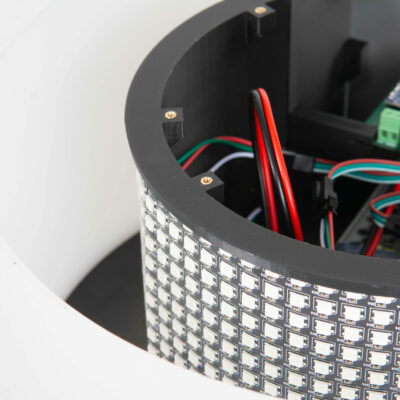Lawrence is a US-based pop-soul group founded by siblings Gracie and Clyde Lawrence, who have played live alongside innumerable collaborators such as Vulfpeck, Jon Bellion, Jacob Collier, the Jonas Brothers, and the Rolling Stones. Their impressive live show has no timed playback unlike most modern pop acts; instead they aim to produce every sound live on stage.
There are a few specific samples, one-shots and musical interludes which are pre-recorded, and they wanted to have a very obvious visual way of showing the audience that these were played in the moment. I was commissioned to design and build an instrument that would showcase these samples and be obvious to the audience, even in the 10,000+ capacity venues the band often play in.






















